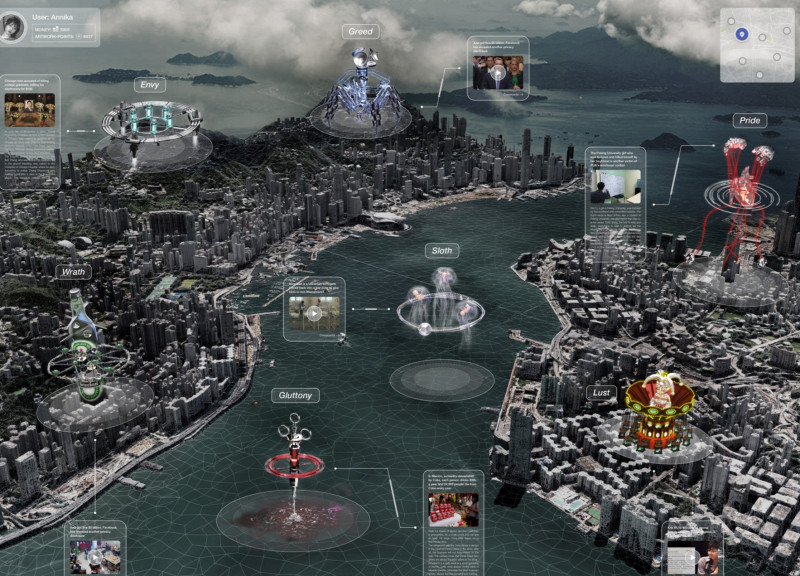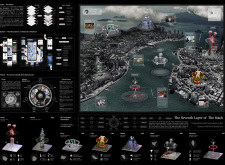5 key facts about this project
The architectural design draws on the theoretical framework of Benjamin Bratton's *The Stack: On Software and Sovereignty*, which defines six key layers: Earth, Cloud, City, Address, Interface, and User. A new layer called Network has been added to connect these ideas with current urban life. Set in a lively urban environment, the design acts as an interactive platform for citizens, fostering discussions and engagement with important social issues through its various architectural elements and functions.
Layered Structure
The design utilizes a layered approach that reflects how the different elements are interconnected. Each layer serves its own function while also relating to the others, creating a framework for navigating urban experiences. This organization enhances both practicality and the communication of themes relevant to modern society and technology.
Interactive Platform
An interactive platform is central to the design, emphasizing user experience and participation. It accommodates a variety of activities, including exhibitions, discussions, and social gatherings for urban residents, visitors, and creators. By prioritizing user engagement, the platform aims to build a sense of community in a world that becomes more digital. The inclusion of interactive features encourages users to connect and contemplate their shared urban experience.
Thematic Exploration
The Seven Deadly Sins serve as a theme for examining social issues, with each vice acting as a lens to explore ethical questions. This thematic framework shapes the design of exhibition spaces where art can delve into subjects such as pride, greed, and lust. These exhibitions spark discussions on social injustices and encourage critical thought among attendees about their environments.
Digital Expression
A key aspect of the interactive platform is the NFT store, where creators can showcase digital artworks focused on various social issues. This combination of digital art and architectural space creates new avenues for artistic expression while raising awareness about societal challenges. It illustrates how architecture can bridge the gap between physical and digital worlds, integrating contemporary practices into the built environment.
The design culminates in a detailed exhibition space that presents art and invites user engagement. It creates a strong link between the physical structure and the digital narratives that populate modern urban life.



















































